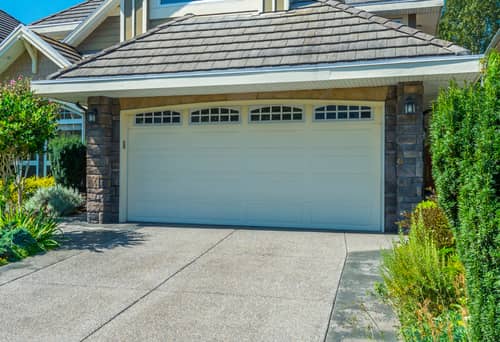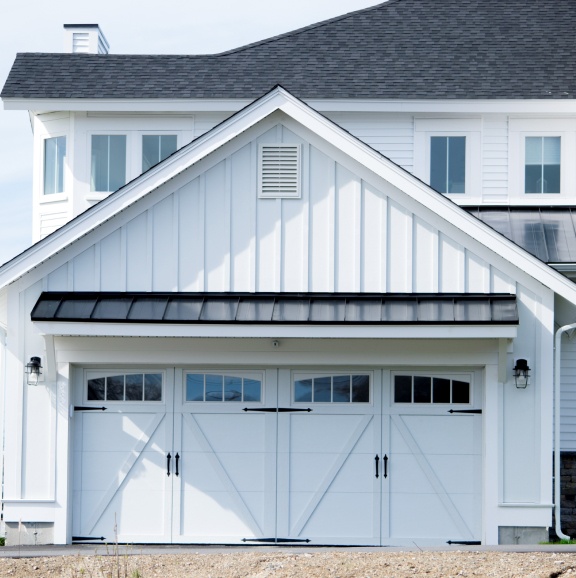Changing the frequency of your Garage Door Repair Bryan TX is a necessary step to ensure security and prevent interference from neighboring devices. The frequency adjustment process may vary depending on the make and model of your garage door opener.

Here’s a comprehensive guide on how to change the frequency of your garage door opener:
1. Identify the Opener Model: Before attempting to change the frequency of your garage door opener, identify the make and model of the unit. This information can usually be found on the opener itself or in the owner’s manual. Different manufacturers may have specific procedures for adjusting the frequency, so it’s essential to follow the instructions tailored to your opener.
2. Prepare the Opener: Begin by disconnecting the power supply to the garage door opener to prevent accidental activation during the frequency adjustment process. Locate the power cord or switch on the opener unit and disconnect it from the electrical outlet or turn off the power source at the circuit breaker.
3. Access the Frequency Settings: Depending on the opener model, access the frequency settings either through the control panel on the opener unit or via the remote control transmitter. Some openers may require you to remove a cover or access panel to reveal the frequency adjustment switches or buttons.
4. Locate the Frequency Adjustment Controls: Look for switches, dials, or buttons labeled with frequency settings on the opener unit or remote control transmitter. These controls typically allow you to select different frequency channels or codes to avoid interference from neighboring devices.
5. Adjust the Frequency: Use the provided instructions or diagrams to select a new frequency channel or code for the garage door opener. Depending on the opener model, you may need to flip switches, turn dials, or press buttons to change the frequency settings. Ensure that you follow the correct sequence and configuration specified by the manufacturer.
6. Test the Opener: After adjusting the frequency settings, test the garage door opener to verify that it operates correctly. Reconnect the power supply to the opener and test the opener using the remote control transmitter. Press the button on the remote control to open and close the garage door, confirming that the frequency adjustment was successful.
7. Fine-Tune the Settings: If necessary, fine-tune the frequency settings to optimize performance and minimize interference. Experiment with different frequency channels or codes to find the most reliable and secure configuration for your environment. Test the opener multiple times to ensure consistent operation.
8. Secure the Opener: Once you’re satisfied with the frequency adjustment, secure the opener unit and remote control transmitter to prevent unauthorized access or tampering. Replace any covers or access panels removed during the adjustment process and ensure that all components are securely fastened.
9. Update Remote Controls and Keypads: If you’ve changed the frequency of your garage door opener, you’ll need to update the frequency settings on all remote controls and keypads associated with the opener. Follow the instructions provided with each remote control or keypad to reprogram them with the new frequency code.
10. Test Remote Controls and Keypads: After updating the frequency settings on remote controls and keypads, test each device to ensure that it operates correctly. Press the buttons on the remote controls and keypads to open and close the garage door, confirming that they are synchronized with the new frequency code.
11. Monitor Performance: Monitor the performance of your garage door opener following the frequency adjustment to ensure that it operates reliably and without interference. Pay attention to any signs of malfunction or inconsistent operation, and address any issues promptly.
12. Consider Professional Assistance: If you’re unsure about how to change the frequency of your garage door opener or encounter difficulties during the process, consider seeking professional assistance from a qualified technician. A professional technician can provide expert guidance and ensure that the frequency adjustment is performed correctly and safely.
Garage Door Repair Bryan TX If you’re uncertain or uncomfortable with the process, don’t hesitate to seek assistance from a professional technician to avoid potential issues or damage.
Circle B Overhead Door
1818 Drillers Dr, Bryan, TX 77808, United States
1-979-324-6733


